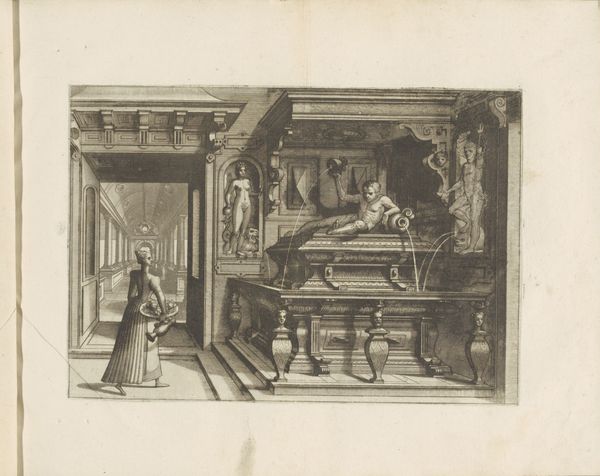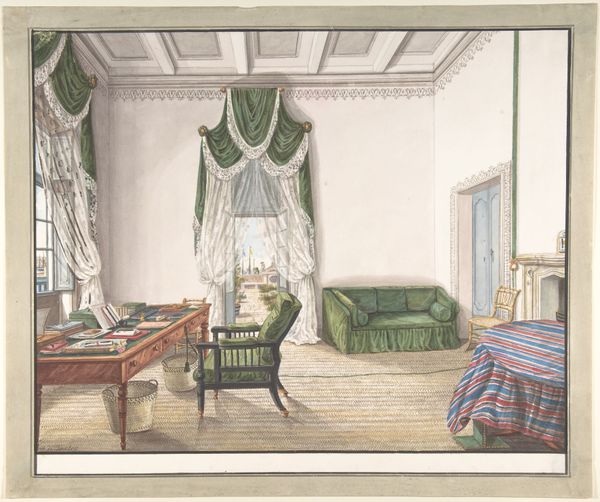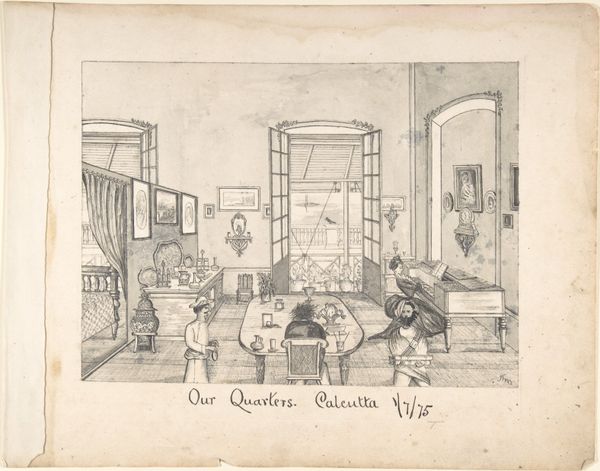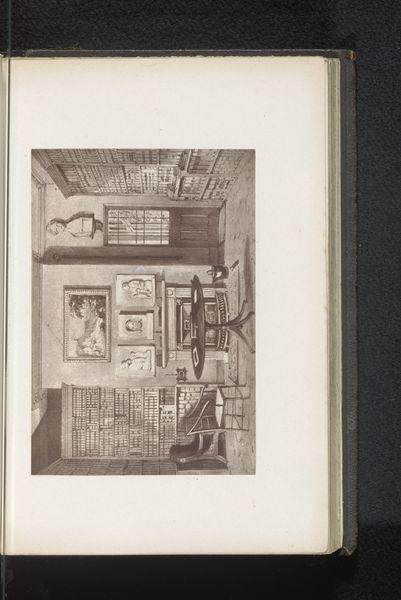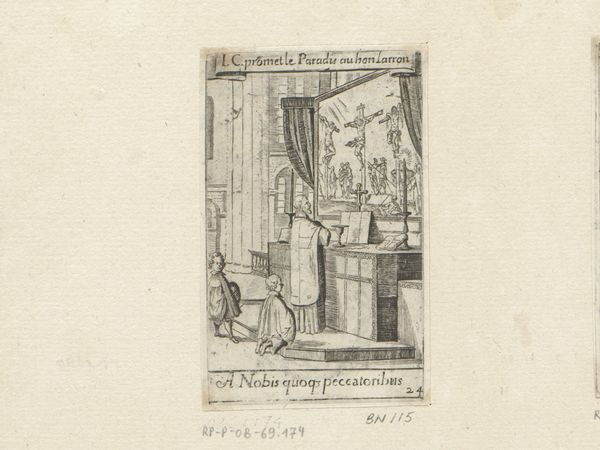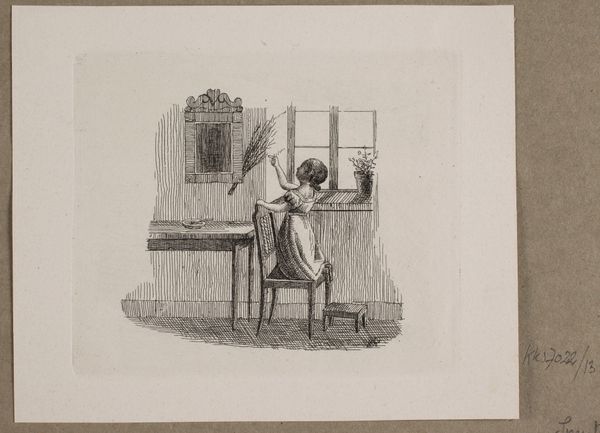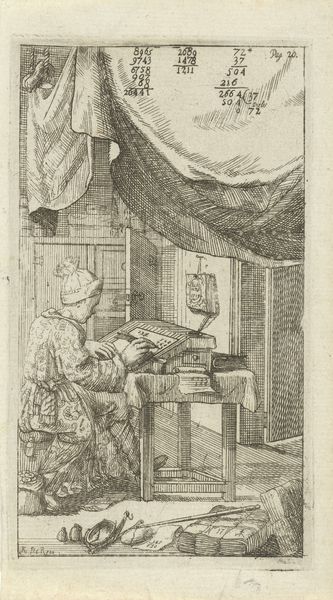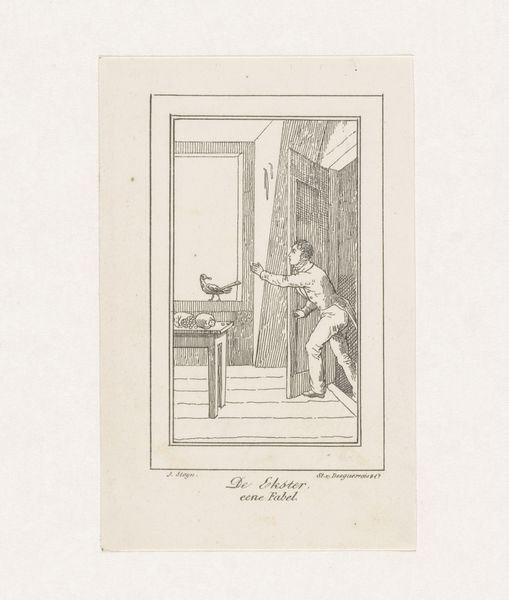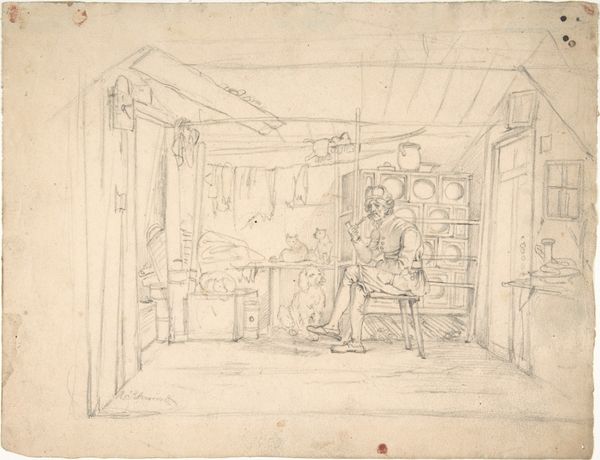
drawing, watercolor
#
drawing
#
aged paper
#
toned paper
#
dutch-golden-age
#
light earthy tone
#
watercolor
#
brown and beige
#
earthy tone
#
neutral brown palette
#
watercolour illustration
#
genre-painting
#
brown colour palette
#
watercolor
#
warm toned green
Dimensions: height 155 mm, width 195 mm
Copyright: Rijks Museum: Open Domain
Curator: Welcome. This drawing, attributed to Jan Brandes and possibly dating from 1785 to 1788, is titled "Hut van de chirurgijn op het VOC-schip de Stavenisse"—The Surgeon's Cabin on the VOC ship Stavenisse. It is a watercolor and ink work on paper, rendered in muted, earthy tones. Editor: My first impression? Intimacy and order. Despite the constraints of shipboard life, everything has its place. It’s like a Dutch interior shrunk down to fit on a vessel. The linear perspective, while rudimentary, enhances the sense of containment. Curator: Precisely! Brandes, travelling with the Dutch East India Company, documented these scenes as a form of visual record. The cabin wasn't just a workspace, it was living quarters, revealing much about the surgeon's status and the conditions aboard. Note the placement of the bed and medical supplies. It underscores how inseparable work and rest were for this individual. Editor: I'm intrigued by the desk. It appears both functional and somewhat ornate, suggesting a space for both practical tasks and perhaps some private reflection, maybe journaling or charting. It contrasts beautifully with the bare utilitarian aspects, giving a feel for dual identities at sea. Curator: The composition balances necessity and aspiration. Consider the chair, positioned as if awaiting its occupant. It hints at comfort and contemplation. What materials were accessible to the surgeon and the conditions on ship? Was there access to adequate light, fresh water? All of this reveals the relationship between health, labor and colonial enterprise. Editor: The warm brown color palette brings to mind parchment or old maps; materials deeply associated with journeys. Even the details on the medicine bottles draw my eye. The painting acts like a stage for domesticity amidst the open seas. I keep coming back to that chair as well. Curator: These nuances reflect the realities of colonial life, trade and the blurred lines between science and service. How does the consumption of medicinal plants play a role here? Editor: I agree; Brandes masterfully condenses the visual markers of identity and functionality. It opens up such a sense of storytelling. It certainly does offer much food for thought on design and human need.
Comments
No comments
Be the first to comment and join the conversation on the ultimate creative platform.


